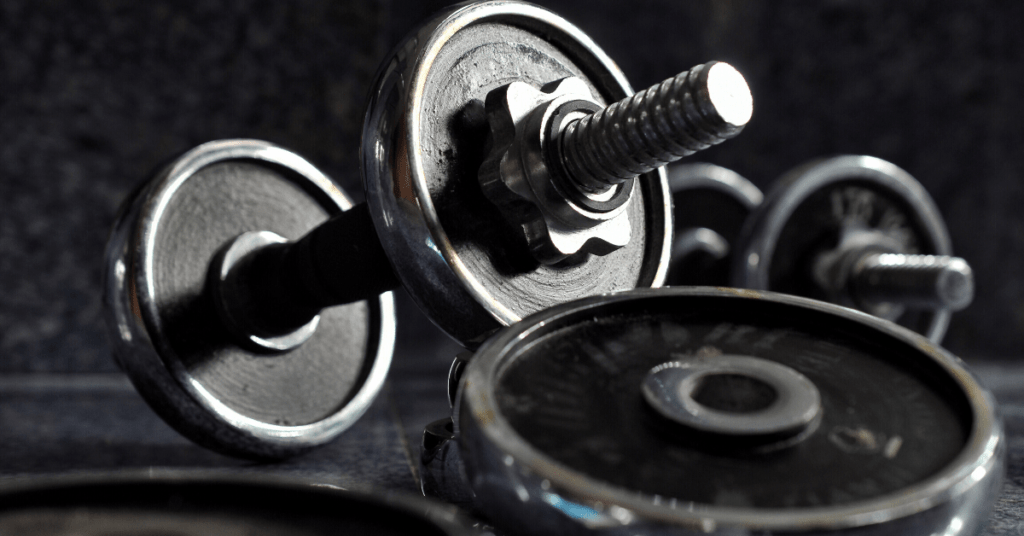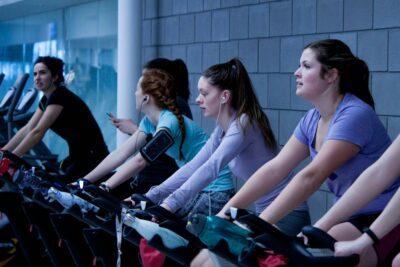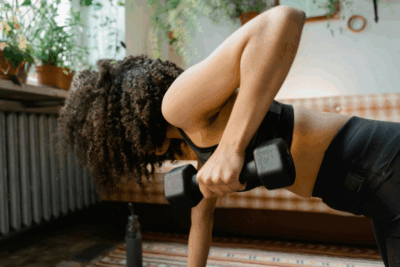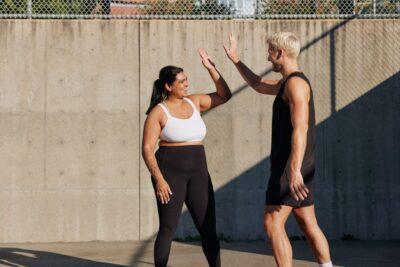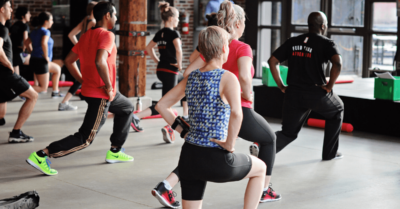As lockdown eases, gyms and fitness centers are planning their re-opening. The coronavirus has presented studios with the challenging task of opening in a very different world, and gym safety is a top priority. Gyms are unique in the sense that they are indoors, and there is a high use of multiple people sharing equipment. This means that there is an inherently higher risk of transmission due to the nature of gyms.
The fitness industry is currently jumping into action to prepare to welcome back its members with open arms. With sanitizing stations and new health and safety procedures, the gym environment will offer a different way of working out. You need to implement new practices to protect your members and encourage them back safely.
In this article, we will discuss the risk of coronavirus in the gym and 10 safety tips you can implement to protect your members as you re-open your business. Skip ahead to:
The Risk of Coronavirus at the Gym
The coronavirus can spread from person to person through droplets from the nose or mouth from a person with COVID-19. Although evidence so far shows that the disease doesn’t spread through sweat, items touched by multiple people pose a risk such as shared gym equipment like barbells and treadmills.
Business owners have a responsibility to protect their members in the best way possible. By putting in new procedures and protocols, you can start to minimize the risk and stop the spread of COVID-19. By taking the right steps, you can cover yourself, protect your members, and avoid future liability claims. The last thing you want is to face a liability claim down the line. The government guidelines may differ from state to state, so always keep up to date with your local government resources.
Listen to the Fitness + Technology Podcast’s recent episode on Club Management: Guidelines For Re-opening Your Facilities. Host Bryan O’Rourke welcomes Tim Keightley from Texas Family Fitness to discuss how Tim and his team will implement new guidelines for re-opening their facilities.
COVID-19 Risk Assessment in Gyms and Studios
Gym members are already at a greater risk of injury due to the environment of a typical facility. With free weights and fitness equipment, it’s easier than you might think for accidents to happen. In particular, if a member isn’t using proper form or doesn’t know how to use the equipment. Some of the most common gym injuries are shin splints, knee pain, and wrist sprains. It’s time to re-evaluate your health and safety risk assessment, identify new hazards, and create new procedures that fit the current situation.
Health and Safety
As a gym owner, you will be all too familiar with health and safety. It’s estimated that 459,978 were injured while exercising or using exercise equipment in 2012. Although many people head to the gym to get healthier and fitter, there is an inherent risk of injury. The coronavirus is very much in the limelight right now, but all of the standard health and safety measures you have in place are still relevant.
If you’re considering updating your health and safety measures, we’ve pulled together a guide on keeping your member safe and how you can lower the risk of injury while visiting your gym.
Identify COVID-19 Hazards
Several industries are currently carrying out COVID-19 risk assessments as they prepare to open to the public and get moving again. Places that are indoors with high use of shared surfaces pose a risk. It doesn’t mean that you shouldn’t go to the gym, you just have to be careful and minimize the risk as much as possible. By identifying areas that could be a problem, you can take a proactive approach to stop the spread of COVID-19.
10 Gym Safety Tips to Protect Your Members
As more is uncovered about the coronavirus and the way it spreads, no doubt, the government will update guidelines accordingly. For now, you can do everything in your power to protect your members and make them feel safe in the wake of the pandemic. Here are 10 gym safety tips to minimize the risk of transmission and protect your members.
Regular and Thorough Cleaning
You will need to carry out regular and thorough cleaning at your gym every day. This means that you may need to increase hours allotted to cleaning or bringing in new staff members to support your new procedures. It’s a good idea to carry out a deep clean much more regularly on top of your normal cleaning routine.
As a business that’s open to the public, you will need to figure out what you will ask your members to do. You will need to provide instructions and cleaning products for wiping down equipment after use. Shared facilities like toilets will need to be cleaned regularly, potentially after each use. Good cleaning practices will put you in a position to minimize risk and protect your members.
Social Distancing
Social distancing guidelines are in place to help you avoid close contact with people you don’t live with. This helps to stop the spread of the virus. Current recommendations are that people should stay at least six feet apart from people who are not from the same household. It can help stop the spread of the virus by giving members the ability to keep their distance from each other.
Depending on the size of your gym and nature of what you do, some businesses will find this easier than others. Think about using protective screens between equipment such as rows of treadmills and bike machines. This will help to retain distance between members. If you run fitness classes, keep class sizes small, ideally in a bigger space so that members can stick to social distancing guidelines. What’s better is if you can hold some fitness classes outside -this would work especially well for Bootcamp-style classes.
Disinfect Equipment Between Each Use
According to a study from the National Institutes of Health, CDC, UCLA, and Princeton University, the coronavirus is stable for several hours to days on surfaces. Depending on the type of surface, the amount of time it’s stable can change. It’s vital to disinfect equipment between each use.
The Customer
Engagement Playbook
for Your Fitness
Business
Discover more You will need to put steps in place that allow you to clean and disinfect equipment between each use properly. Whether you encourage members to sanitize before using the equipment or your gym staff carry this out, is down to you. But you’ll likely need to implement both. Think about any high-touch area such as doorknobs and other equipment that will need to be cleaned and disinfected. Keep in mind that members won’t do as a thorough job as your staff when it comes to disinfecting. It may be more efficient for your staff members to carry out specific tasks.
Increase Coronavirus Communication
Ongoing communication is key to making members feel safe and confident with coming back to the gym. While some may be eager to return to the gym, others may be much more hesitant and understandably so. Ongoing communication can help reassure members as well as keep them fully up to date with new procedures. If they know what to do and what to expect, they can protect themselves and follow the new rules.
With social media posts, emails, newsletters, WhatsApp message, and push notifications, there’s a ton of ways to communicate with your members. Your ability to be able to protect members is dependent on them following your guidelines. By increasing communication at this time, it may also help to re-engage members who may have left your gym during the coronavirus pandemic’s peak.
Encourage Regular Handwashing
Regular handwashing is something that is now a part of many people’s day-to-day life. It’s been drilled into you to wash your hands constantly throughout the day to minimize the risk of spreading or coming into contact with the virus. Give your members access to hand sanitizing stations and set up a new entry procedure.
Encourage members to wash their hands on entry and regularly wash their hands before touching any equipment. A combination of vigorous cleaning, regular hand washing, and disinfecting surfaces and equipment will form the basis of most gyms’ new safety procedures.
Be Mindful of Coronavirus Symptoms
As the number of infected people decreases and many recover from coronavirus, it’s important to be mindful of symptoms as lockdown eases. Consider how you will handle members with symptoms and inform them of your new procedure on how you will manage this. If members have paid for classes or membership in advance and need to self-isolate, you can offer refunds or let them postpone classes as required. It’s essential to be flexible in the current situation and support your members’ needs.
You will also need to think about your procedure if a member or employee has come into the gym and then tested positive for COVID-19. This may look like a full closure for 24-28 hours while you deep clean the gym and all equipment. Your communication strategy will have an essential role in managing a potential coronavirus case.
Stagger Class Schedule
It’s normal for gyms to have peak times when many members are attending. However, with social distancing guidelines and the need for more cleaning, it’s essential to remove a peak times. It’s likely that only a fraction of members will be allowed in your gym at one time.
If you can, stagger your class schedule. With more people working from home, it’s likely that member’s workout routines have changed. Re-evaluate your class schedule and work to create a timetable that encourages members to come in at different times.
Cap Gym Member Numbers Onsite
You will likely need to cap the number of members in the gym at a time. This will need to be in line with government guidelines and safety. The information surrounding numbers may vary according to your government, business size, and location, so be sure to stay up to date with the latest recommendations.
To limit the number of people in the gym, you may need to set up a booking system. If you’re a yoga studio, this is much easier as you can set class limits and run a certain number of classes a day. Gyms will need to think about how they will manage member numbers to make sure members still enjoy the experience while remaining safe.
Limit Shared Amenities
Make a list of all your shared amenities and high-use touchpoints in your gym or studio. This will include things like toilets, showers, water fountains, gym mats, dumbbells, treadmills, any other equipment, etc. Look into any areas or surfaces where multiple people will come into contact throughout the day.
With shared amenities, you have to take the decision to either remove them or put in a procedure that ensures it will be disinfected regularly. The majority of gyms are choosing not to allow members to sue the water fountains or showering facilities. You will likely need to keep toilets open but implement new cleaning procedures and allow minimal people in at any one time.
Standard Health and Safety
All this is in addition to your standard health and safety guidelines. With weight training equipment and exercise, there is already increased risk of injury. By expanding your health and safety to include this new hazard, you can do everything in your power to protect your members from injury and minimize the risk of COVID-19.
As you get ready to reopen your gym, we’ve pulled together a health and safety checklist to get you started. This will help make sure you have everything in place before reopening your business.
In Summary
No one could have predicted that you would have to be thinking about how to re-open your gym in the wake of a pandemic. But, the most successful businesses adapt quickly to the changes around them. By taking responsibility for your members’ safety and implementing new procedures and guidelines, you can minimize the spread of the virus at your gym and protect your members.


